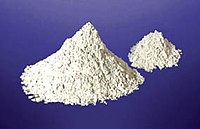
Photo from wikipedia
Owing to orange-peel defects, the industrial application of light alloy structural members is significantly restricted. In this study, a quasi-in situ axial tensile experiment was conducted on a 6063-T4 aluminum… Click to show full abstract
Owing to orange-peel defects, the industrial application of light alloy structural members is significantly restricted. In this study, a quasi-in situ axial tensile experiment was conducted on a 6063-T4 aluminum alloy sample. The surface morphology and microstructure evolution of the tagged area were scanned simultaneously using laser scanning confocal microscopy and electron backscattered diffraction, and the surface roughening behavior of the polycrystal aluminum alloy surface, caused by deformation, was quantitatively analyzed. As the concave–convex features at the surface appear in pairs with increasing global strain, the width of the concave features increases, whereas that of the convex features decreases gradually, resulting in the initially increasing surface roughness, which subsequently remains unchanged. During the stretching process, the small-sized grains in the 37~102 μm range show weak strain localization and the highest coordination of deformation. The deformation mode of medium-sized grains in the 114–270 μm range tends to grain deflection, and others tend to slip.
Journal Title: Materials
Year Published: 2022
Link to full text (if available)
Share on Social Media: Sign Up to like & get
recommendations!